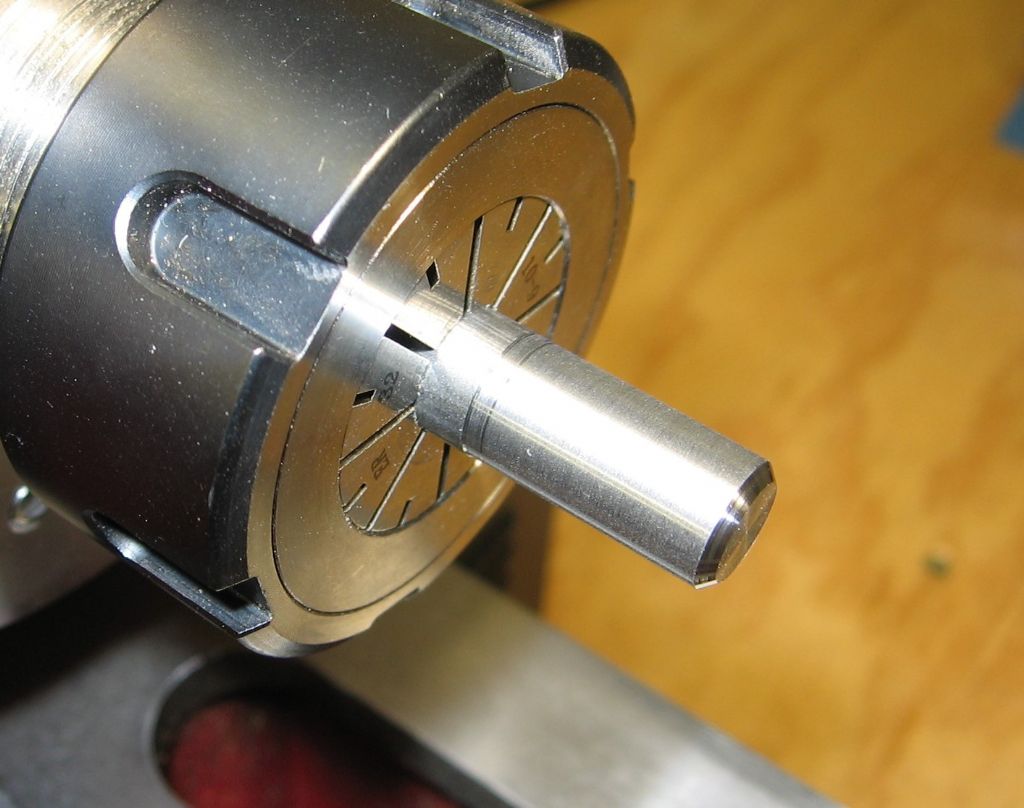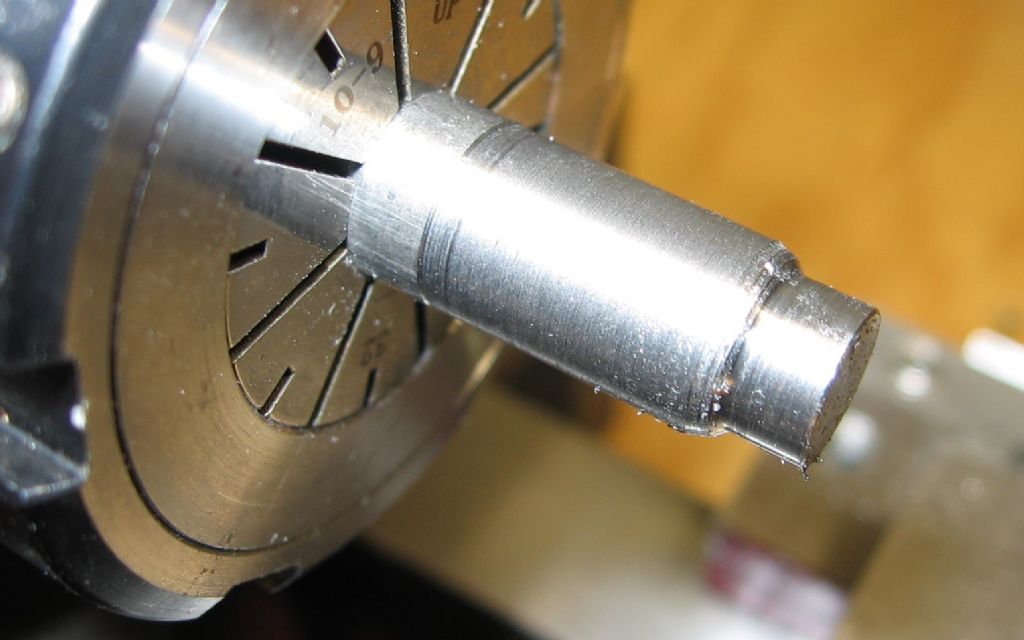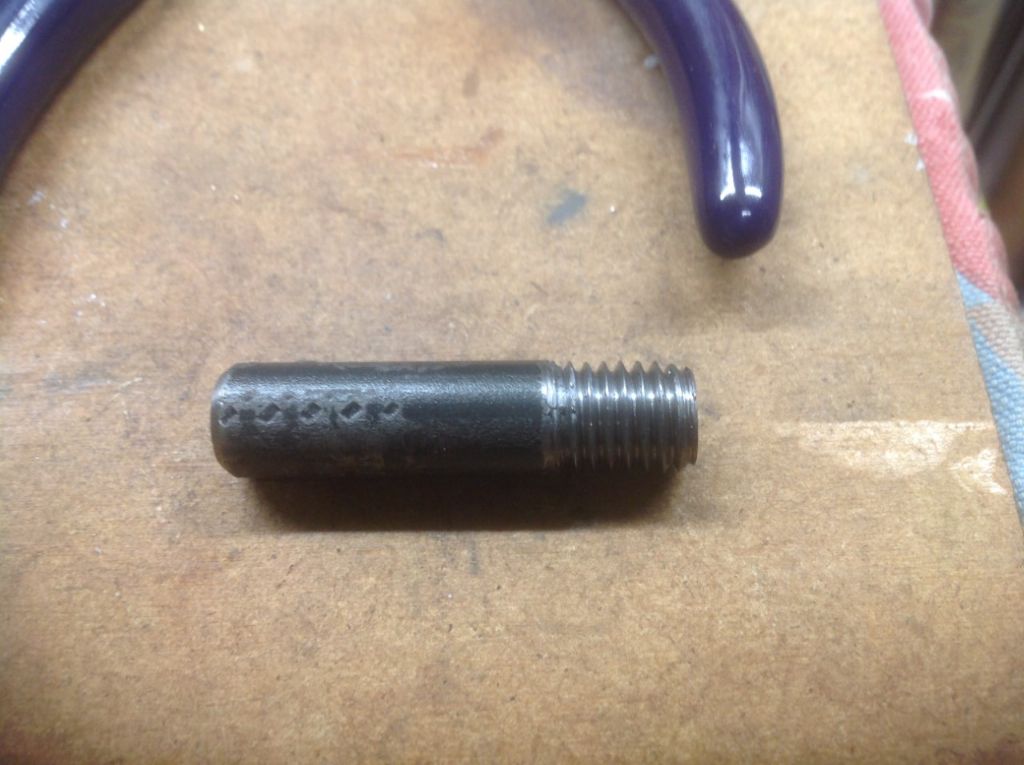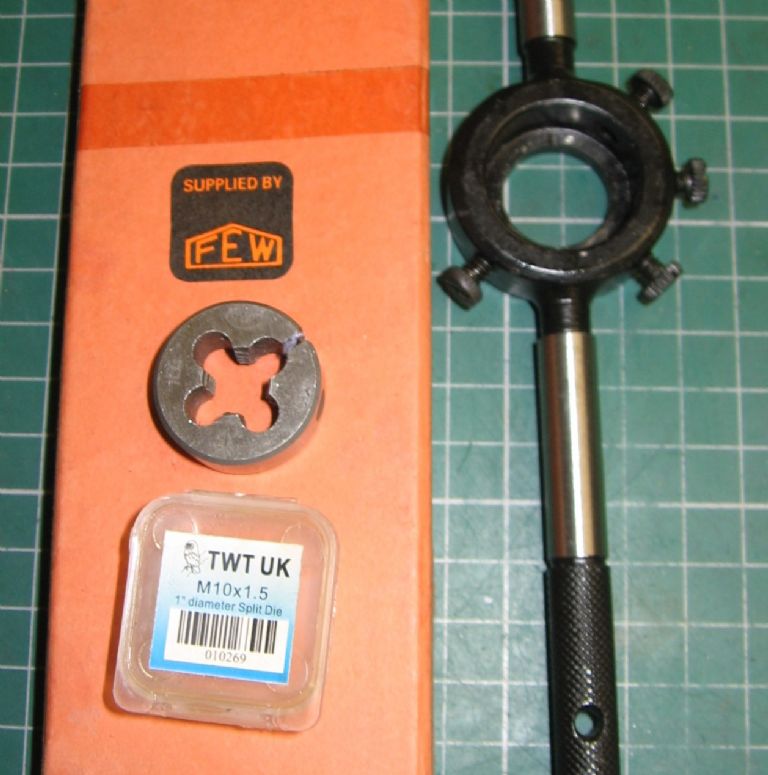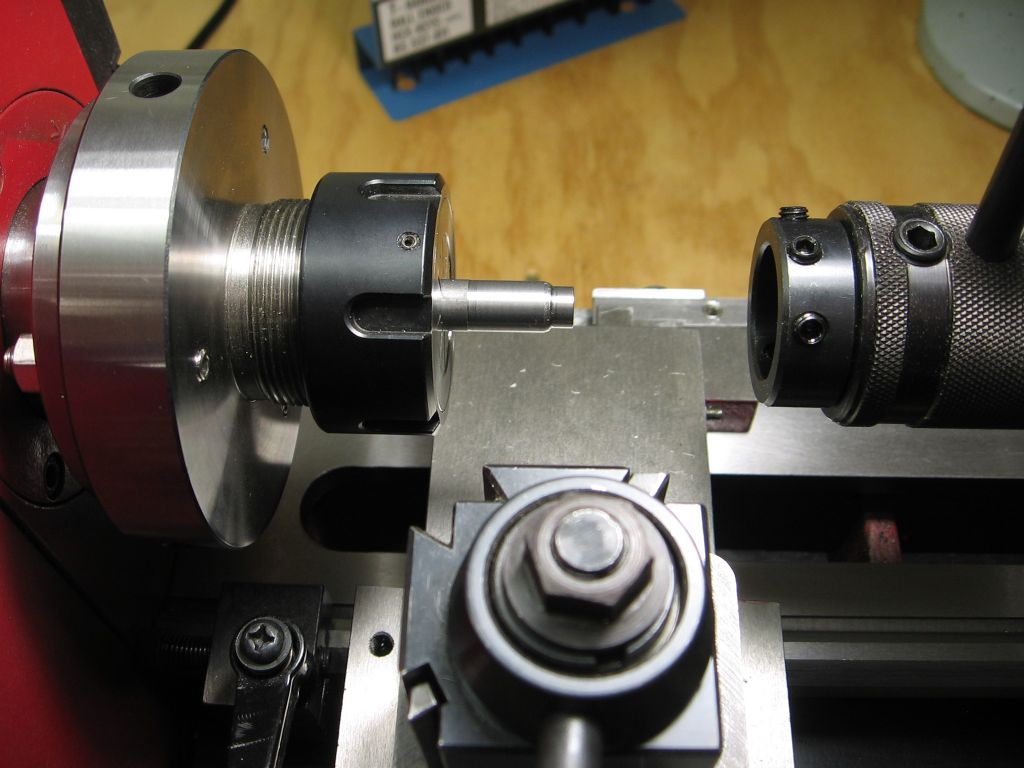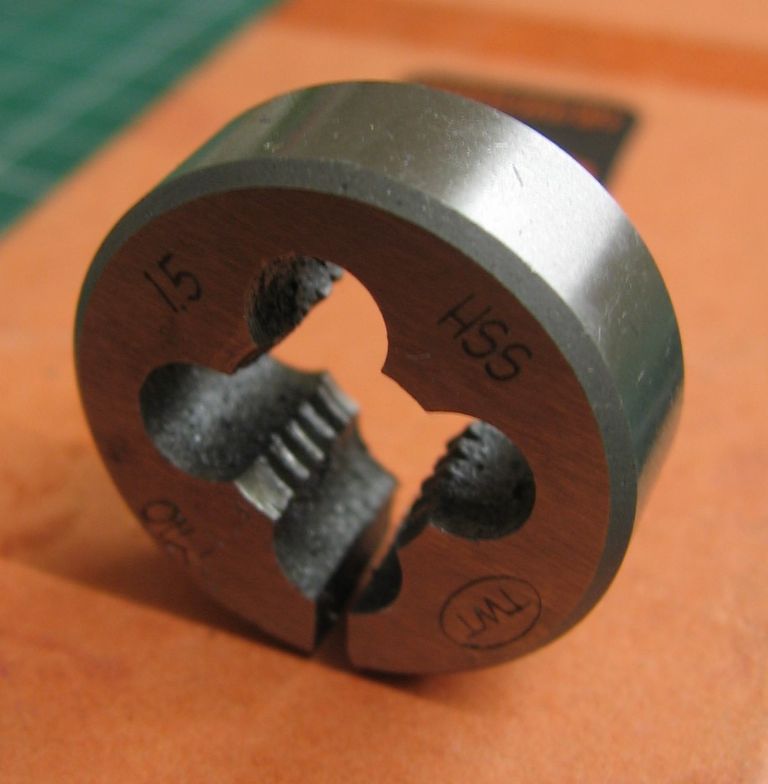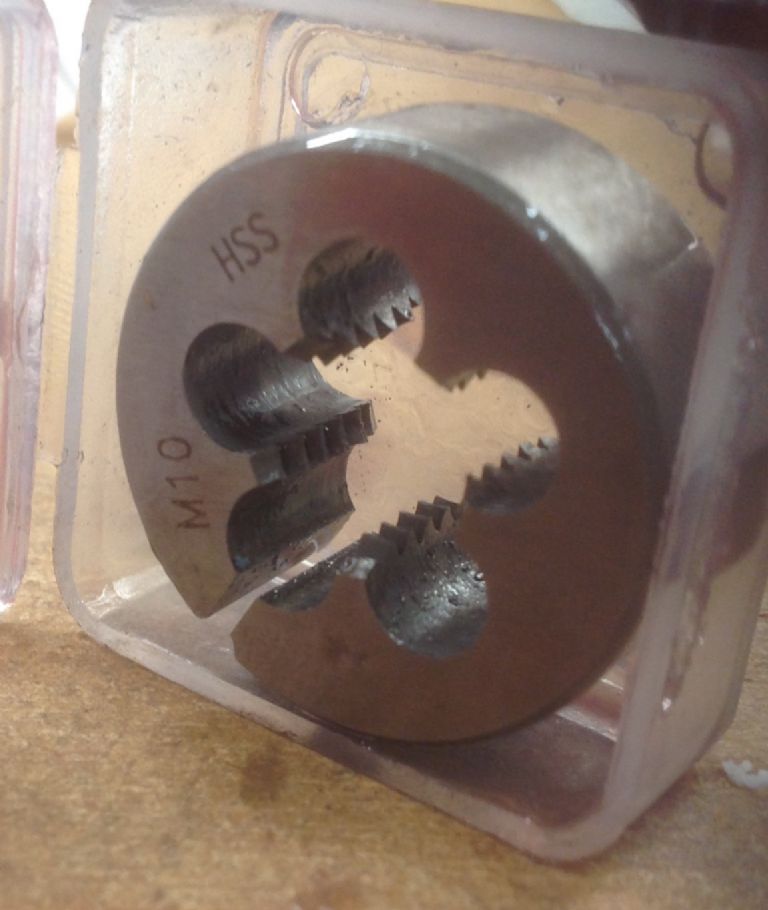From what Martin has said, he did almost everything right:
- Known metal, leaded Mild-steel, easy to machine
- Diameter of rod turned down 5% less than M10
- End of rod chamfered to help start the die
- Bought a reassuringly expensive die from a reputable supplier
- Die backed off frequently to break swarf
- Undercut at the shoulder
- Cutting oil applied
Bad starting might be part of the the problem, however, the photo suggests the die is in poor shape, which would explain the result. A blunt die tears the metal rather than cutting it, needing considerable extra force, and tending to twist and bend the rod as the die is forced round.
What could possibly go wrong?
- Manufacturing error – the die was wrong from new
- Operator error –
- the die was previously blunted by cutting a thread in a work-hardening material like stainless steel. Damage highly likely if the rod was oversized, the die didn't start at 90�°
- Failing to clear swarf (but it takes time to blunt a decent die)
- the rod is fatter than 10mm diameter, not 9.95 as believed – faulty measuring
- die back to front (unlikely)
- Adjustable die too tight, ie not opened up by the holder's point screw
- Die not centred in the holder (wrong sized holder)
- poor start. This is easy to do! It's why many of us like to begin with a lathe cut spiral for the die to run in.
- persisting with a bad cut, not realising something is wrong due to inexperience
When I started out tools got blunt remarkably quickly. Now they last a lot longer. I think the main reason is my technique has improved. Rather than forcing my way through metal I 'let the tool do the work', support the job properly, and avoid eyeballing angles and dimensions. I'm also much better at recognising when something is wrong, able to detect bad news by feel and sound.
I find threading by hand is far more likely to go wrong than when the job and tap or die are held mechanically. I don't think I've ever messed up a thread properly started with a lathe cut. I've blundered more than I care to admit by cutting the wrong pitch for the die though, blush…
Dave
Edited By SillyOldDuffer on 14/11/2022 11:48:34
 File Handle.
File Handle.


